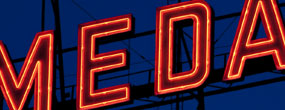-
 The Art of Looking Sideways
The Art of Looking Sideways- by Alan Fletcher
A seriously massive work from the late Alan Fletcher compiling tons of quotes, work, and nuggets of wisdom from designers, artists, writers, and more, all categorized by topic. One of the most diverse and densely packed sources of inspiration you can have on your shelf.
 Art Direction Explained, At Last!
Art Direction Explained, At Last!- by Steven Heller and Veronique Vienne
Defining “art direction” is a hard enough nut to crack on its own, but teaching it to someone can be a daunting task. It combines so many unknowns, so many gut feelings, and so much intuition, that it’s best learned from seasoned practitioners. Steve Heller and Veronique Vienne, two battle-hardened art directors in their own right, define and discuss just what art direction is and how to capture the best thoughts in your designs. This book compiles their take on the topic, and polls many of the world’s best art directors through case studies and interviews.
 The ABC’s of Bauhaus
The ABC’s of Bauhaus- by Ellen Lupton and Abbott Miller
A thin but powerful book collecting essays of type and design based on the Bauhaus principles and theories edited by (and with contributions from) the indomitable husband and wife team of Ellen Lupton and Abbott Miller. A perfect primer for learning all about The Bauhaus.
 Visual Literacy: A Conceptual Approach to Graphic Problem Solving
Visual Literacy: A Conceptual Approach to Graphic Problem Solving- by Judith Wilde, Richard Wilde
A ground-level course in basic design principles like rhythm, pattern, focal point, and contrast presented as assignments from a design class complete with creative thinking exercises and real solutions from the authors’ students. Solid advice and examples to help you walk before you can run. These practices are so fundamental, yet are so easily overlooked daily.
 The Elements of Color
The Elements of Color- by Johannes Itten
- This is in many ways a more simplified version of Itten’s exhaustive The Art of Color. If you plan to work with color at all, you owe it to yourself to know some decent color principles like why certain color combinations work better than others, theories on color contrasts and processes to obtain color combinations that evoke particular moods. Also check out: Color Index by Jim Krause, and Leslie Cabarga’s The Designer’s Guide to Color Combinations and The Designer’s Guide to Global Color Combinations. While these are useful, they can also become crutches. Use them as starting points to color ideas or as reference.






 Bird by Bird
Bird by Bird
 Follow me on Twitter
Follow me on Twitter